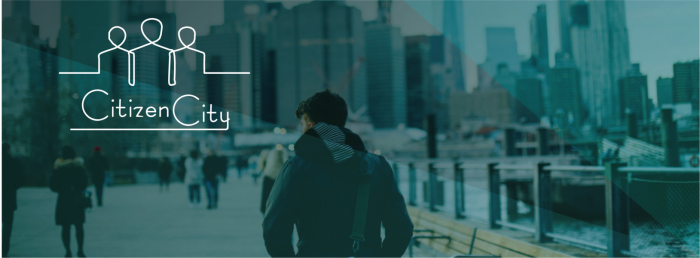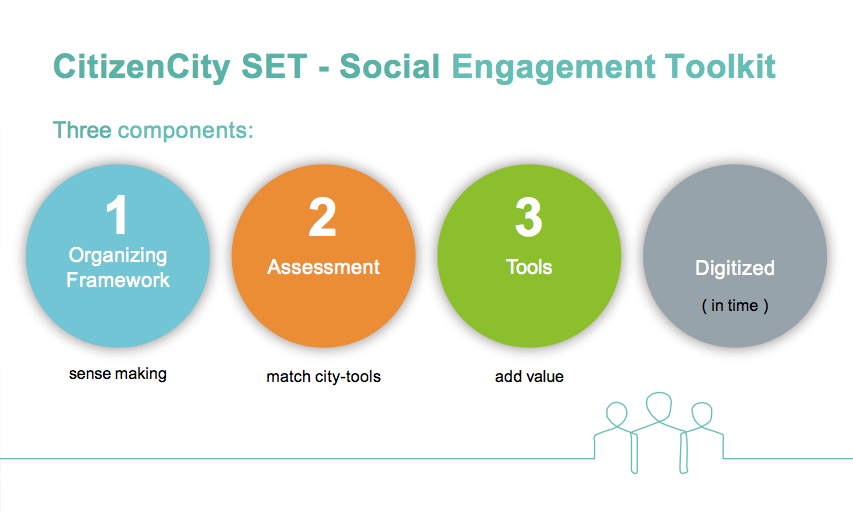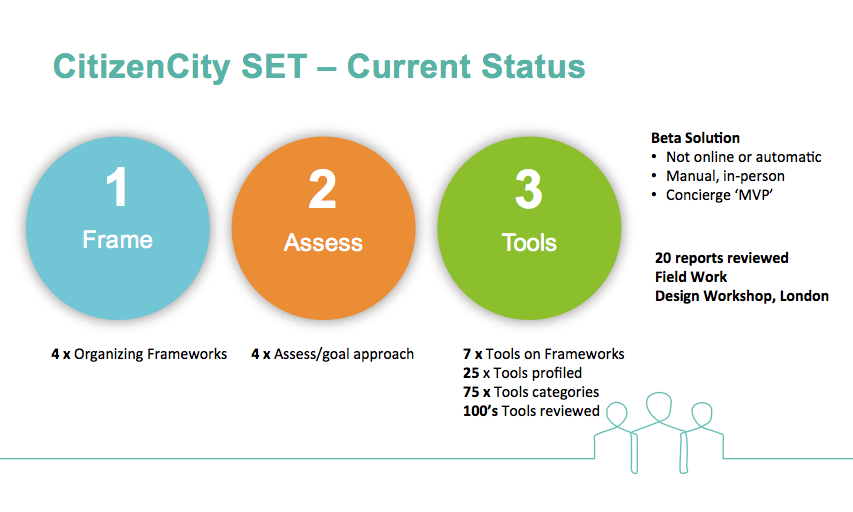
SET – the toolkit to engage citizens in co-creating their cities
In order for cities to co-create the urban spaces of the future together with the people that live in them, a Societal Engagement Toolkit (SET) is being created to help local authorities bridge the gap between them and their citizens.
Our cities today face challenges on an unprecedented scale from providing healthcare for an aging population, reducing crime rates and boosting employment to improving air quality, transforming transport to be more sustainable and (re-)building energy efficient housing.
Cities cannot work in isolation to find solutions to such challenges. Cooperation with businesses, academics and public authorities is important to stimulate and steer change, however involving the citizens who live and work in those cities is vital.
A new and better future can only be delivered when citizens take personal and collective responsibility for how they ‘use’ their city, changing their mindset, behaviours and actions.
Civic engagement is the way to go, the challenge is getting there
“Engaging stakeholders and the public is hard work, yet, overall, it is worth it”, according to a recent review conducted by Leyden et al. (2017). More inclusive participatory processes lead to enhanced transparency, community consensus, cost-effectiveness, shared ownership and greater long-term success.
It follows then that encouraging public participation is high on the agendas of many European cities, both large and small. Most local authorities recognise that involving city dwellers is crucial not only for democratic governance but also to ensure the success of the project they are trying to implement. ‘Co-creation’ in which citizens are involved in designing the city in which they live in the future, but getting started is a challenge.
In city halls across Europe, elected officials and civil servants try to find the best way of engaging with their citizens to create together the ‘smart’, modern and sustainable cities of tomorrow. Government officials can at times find it hard and resource-intensive to involve their citizens in discussions on decision-making and behaviour change. And the myriad of tools and methods can be confusing for staff who lack the time to scroll through pages of documentation and websites offering advice on how to engage. Never mind finding the right tools to reach out to those people whose opinions they seek.
Cue SET – the Societal Engagement Toolkit
That’s where SET–the Societal Engagement Toolkit–comes in. SET was specifically designed to help local authorities and cities co-design and co-create the urban spaces of the future, and how we use them, together with the people that live in them.
“We are developing a toolkit of best practices and success stories by talking to the local authorities early in the process. We take note of their specific requirements and desires and create solutions that really work for them”, explains John Zib, a social entrepreneur, urban media specialist and lead of the CitizenCity initiative developing SET.
“No one gets left behind in the process as attention is given to ensuring the voices of the most vulnerable citizens, the less literate, the elderly and young people all get heard. We ensure that our solutions really do work for everyone”, he added.
How does SET work in practice
SET provides a logical framework for societal insight, engagement and participation to help shape a specific topic and provide a common lexicon for discussion. It enables a city to assess where it stands in terms of readiness and to re-consider how it could or should engage its communities. With SET, cities can explore, plan and build more specific initiatives or projects together with their citizens to speed up transformation and resolve the chronic challenges.
A range of tools and approaches help cities develop social insight, to engage communities and promote their active participation. These span from simple, quick and easy-to-apply solutions, to more sophisticated approaches that tackle complex, larger challenges. SET aligns the most appropriate tools for any issue or project for which the city wishes to engage closely with their citizens and involves a three-step approach:
1. Understand the needs of the city (the framework)
2. Assess the issue to be addressed (the assessment)
3. Present the tailored solution and support implementation of social engagement (the tools)

Below are three of examples for which the SET Toolkit can be applied, and enriched.
|
The Katalaan bike-walk-live bottleneck Katalaan is a short passage between a busy street and park. The section is multi-use and non-auto. Bike and walking traffic are mixed with family housing, park, and community centres. The only exit is on the long side of a major park. High use has stressed the local community and caused safety issues, including violent attacks. New additional routes require agreement from various neighbourhoods so citizen engagement is essential for change. By using SET city officials could define how they wish to engage with their citizens and the exact tool (digital, city-wide mapping, social and media analytics, etc) and techniques (sharing information, compiling information and providing feedback or bringing people together) to use. |
|
SIMmobil The SIMmobil is a mobile information centre used in the Gebietsbetreuung urban renewal in the area of Vienna as part of the SmarterTogether lighthouse programme. Recognising that many innovations fail because citizens or city representatives have not been properly involved, one local authority in Vienna, Austria searched for a platform for outreach, information and communication with the public. The conclusion was a mobile van that could travel around informing the local population about specific campaigns or policies. |
|
The Damp Busters Pilot
Damp Busters ran from February to September 2016. During that time over 700 people aged from 13-80 and from a range of backgrounds came together in over 45 practical workshops and regular meetings to identify key actions and develop and test a ‘damp-busting’ system, which included:
A number of homes tested the Bristol frog temperature and humidity sensor. And now, from a frog for damp to a ladybird for air quality. Simple, engaging, co-created and fun – not ‘big brother’ solutions. |
Starting small, scaling up
SET currently focuses on the needs of small and medium-sized cities. The reason for this explains John Zib is because: “The weaknesses of small and medium-sized cities are their asset. They seem more willing to try new things and are often more swift to act but they lack resources and access to experience. SET provided exactly that. We all become stronger together. Many larger cities already have their favoured approaches; in time we plan to have a portfolio of tools that will be suitable for all.”
SET is currently in the test phase but expects to become a great support for cities, helping them to reach out and engage better and smarter with their citizens.

The next step is to develop communities of cities using SET, stakeholders engaged in building understandable and actionable information. For more on this and the eventual digital platform, watch this space.
Read more:
“A Toolkit by Any Other Name” by Angela Hanson, Innovation Lead, Observatory of Public Sector Innovation / OECD.
“Public and Stakeholder Engagement and the Built Environment: a Review” by Leyden K, Selvin S, Grey T, Hynes M, Frisbaek F, and Silke R (2017)

 A six-step framework was developed by Bristol-based arts organisation
A six-step framework was developed by Bristol-based arts organisation